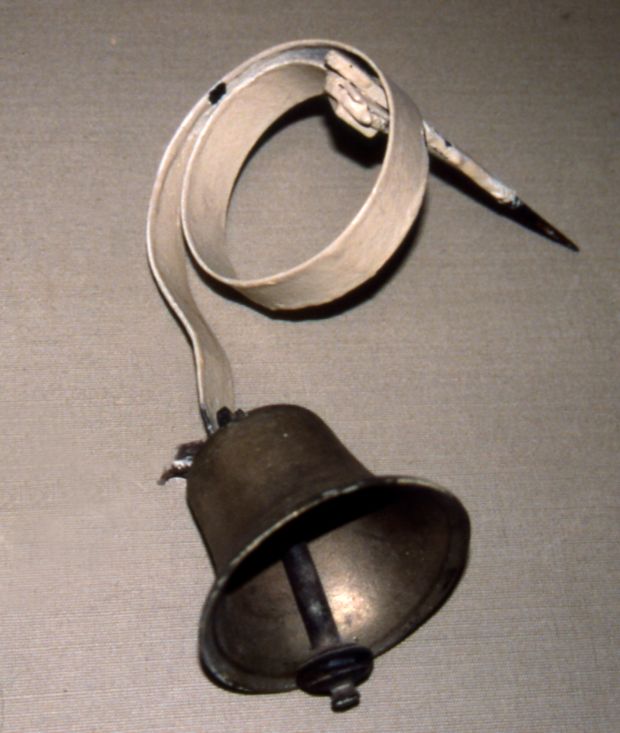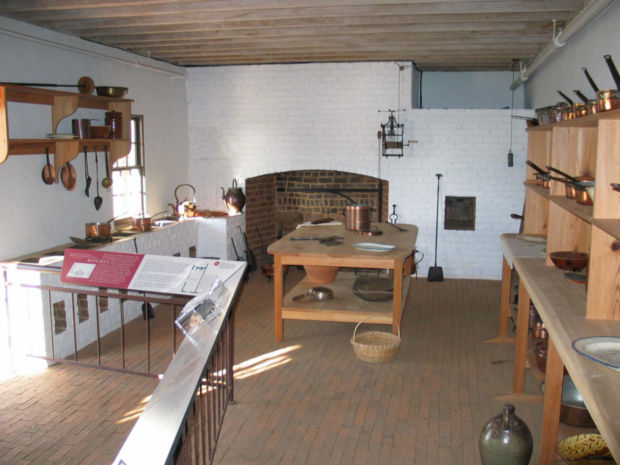Working in the Great House
Reading Level: Middle School
House Slaves
Jefferson called his house slaves “servants.” When Jefferson was absent from Monticello, the servants cared for the house. They also cared for Martha Randolph (Jefferson’s daughter), her family and the many visitors who stayed at Monticello. When Jefferson arrived, the servants were at their master’s beck and call. They dusted and polished, mended and washed, and cooked and served family and guests seven days a week. Sally Hemings had to care for Jefferson’s “chamber and wardrobe … and do such light work as sewing.” Israel Jefferson recalls that he “made the fire in his [Jefferson’s] bedroom and private chamber, cleaned his office, dusted his books.”
Most house slaves received finer cloth than the farm workers. In 1790, three of the house maids wore muslin, Irish linen and calico and had knitted stockings. Jefferson’s personal servants wore tailored suits. Peter Fossett’s mother was one of Monticello’s cooks. He recalled that his upbringing and clothing set him apart from the other plantation slaves.
Cooks
The cooks in Monticello’s kitchen baked breads and muffins. They fixed vegetables from the garden and fruit from the orchard. They roasted and stewed meats and poultry, and created fancy desserts. Ice cream made with an ice cream freezer was a favorite at Monticello.
Jefferson enjoyed lavish meals. Cooks James Hemings, Edith Fossett and Frances Hern were trained by French chefs. At Monticello, they prepared grand meals using a stove with ‘stew-holes’ and two bake ovens. Kitchen assistants kept the cooks supplied with firewood and water, peeled and sliced vegetables, and washed dishes.



